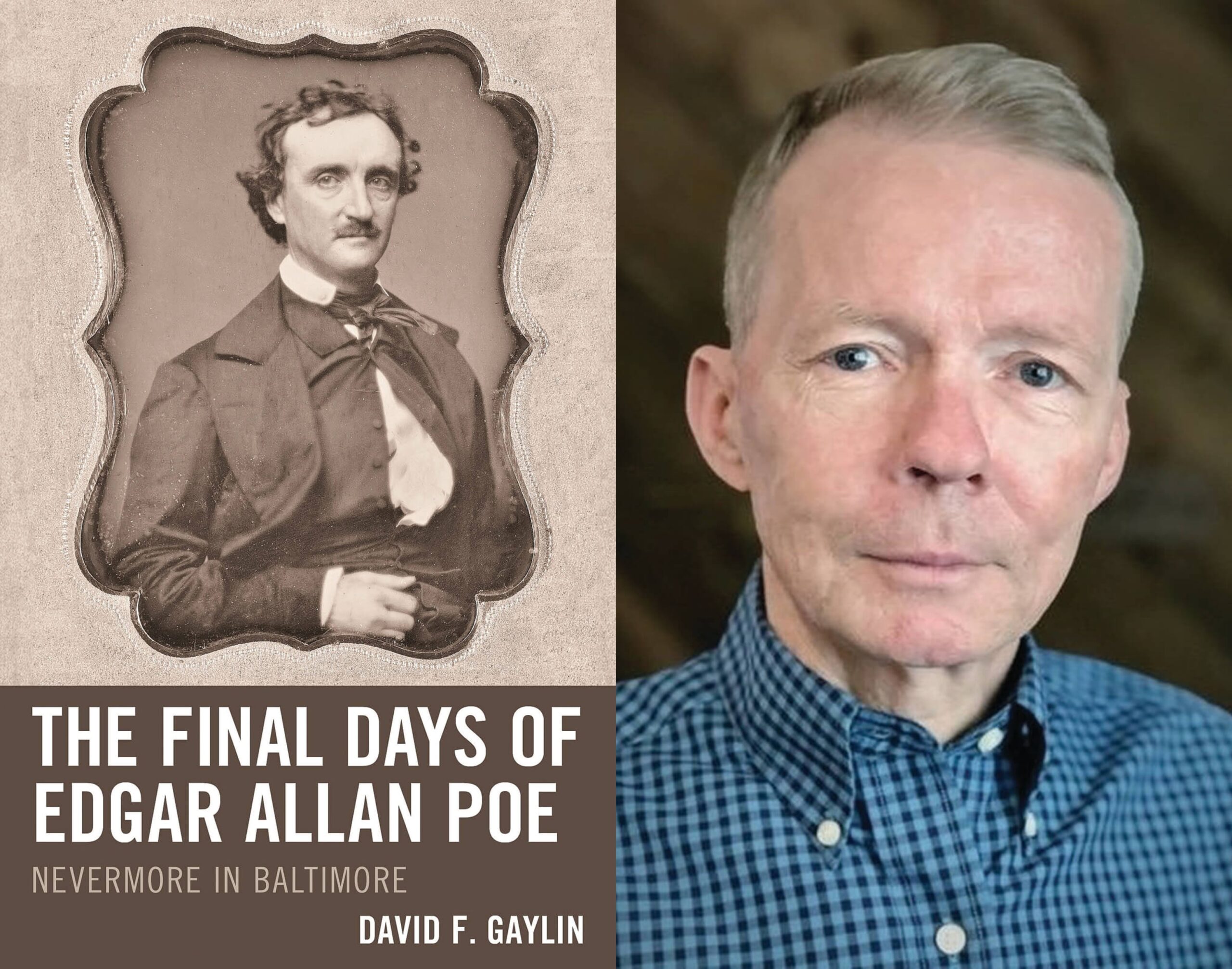Arts & Culture
How Exactly Did Edgar Allan Poe Die? David Gaylin’s New Book is a Comprehensive Examination
The president of the Edgar Allan Poe Society of Baltimore aims to put all of the eternal theories to rest in ‘The Final Days of Edgar Allan Poe.’

The circumstances surrounding the death of Edgar Allan Poe have remained a mystery since he was found in a disheveled stupor in an East Baltimore tavern on Oct. 3, 1849 and died four days later on Oct. 7. A drug overdose? Encephalitis? Election Day “cooping” victim? And what of the macabre and celebrated writer’s unknown whereabouts on the days preceding his death?
The president of the Edgar Allan Poe Society of Baltimore, David Gaylin sets out to put these eternal questions to rest in The Final Days of Edgar Allan Poe.
Meticulously researched, Gaylin’s book does more than document Poe’s final days. Separating fact from fiction, Gaylin tackles the various myths and theories that have crept up over the 175 years since Poe’s death while also providing documented, balanced, and detailed evidence of the writer’s painful struggle with alcoholism. The Final Days marks the first comprehensive examination of the causes and conditions of Poe’s tragic death and should be considered a must-read for serious Poe fans and Baltimore history buffs.
Let’s dispel one myth. Poe’s last destination before his death was not The Horse You Came In On, as the beloved Fells Point bar claims.
We know that because it was a grocery store in 1849 and even as late as 1860 is still listed as a confectionery and not a tavern in city records. He’s found at Gunner’s Hall, which sat one block west of where Attman’s Deli is today, on the north side of the street.
And he’s discovered not in a gutter, but slumped over inside Gunner’s Hall, a first-floor hotel bar and, by coincidence, also an Election Day polling place. Thus the “cooping” theory—that he was a victim of alcohol or drugging and forced to vote several times per Mobtown practice.
I don’t completely dismiss the cooping theory. I just don’t think it’s been adequately proven. But cooping wouldn’t be the cause of death, possibly the circumstances surrounding the death. The mystery of Poe’s death is really two mysteries: his whereabouts in the days and hours preceding when he is found at Gunner’s Hall and taken to the hospital and the cause of death.
What was your Poe introduction?
Well, I was born in Maryland General Hospital, which is now part of the University of Maryland Medical Center, and a couple blocks north of where he is buried at Westminster Hall. [More importantly] I was raised by my grandmother, who was a Poe and literary enthusiast. She also ran a bar on Broadway in Fells Point and pointed out the building to me, up Washington Hill, which had been the hospital where he spent his last days and ultimately died. Her favorite poem was “Annabel Lee” and that stuck with me.
Ultimately, the book tells a heartbreaking tale. The evidence from surviving letters depicts a man in the later throes of alcoholism, which by all indications, ran in his family. Your conclusion, based in good part from his attending physician’s letter to his aunt, is that Poe most likely died of delirium tremens, a severe form of alcohol withdrawal. At the same time, he was clearly struggling to deal with the loss of his wife.
Heartbreaking is the right word for it. You think what could have been. I still get kind of emotional when I think about not just the ending of his life, but the last two or three years. Yet, he did write some of his best work after his wife died. “Annabel Lee,” published posthumously, is probably written for her, and you can see in that piece exactly how he felt about her and how he grieved.
Only eight people were present at his burial. But a quarter of a century later, when he was reburied beneath his oft-visited monument, it’s estimated 1,000 people attended. Alfred, Lord Tennyson sent a poem, and an uninvited Walt Whitman crashed the proceedings. If there’s a heroine, it seems to be Western Female High School English teacher Sara Sigourney Rice, of “Pennies for Poe” fundraising fame. She initiates the Poe monument project.
The high school, when she taught, was next to the cemetery and his unmarked grave, where people began going regularly to pay respects. She was exposed to this, and teaching literature and his work, and so you can understand why she got involved. Her “Pennies for Poe” campaign probably contributed only $50 or so for the monument, but it turned out to be good PR.